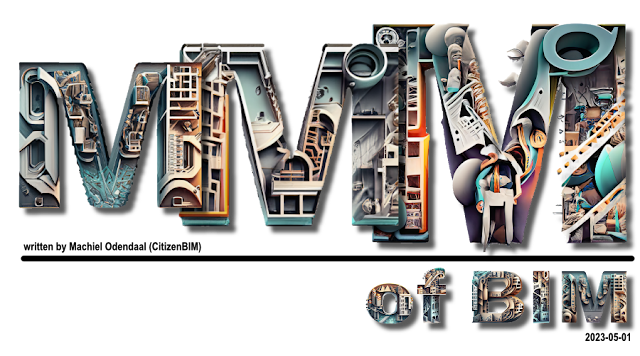BIM and Integrated Design by Randy Deutsch a Book Review from a Reader.
BIM and Integrated Design by Randy Deutsch captivated me from the start, opening my eyes to new ways of thinking in the realm of architecture and technology. The book skillfully combines insightful perspectives on BIM with a focus on the social activities surrounding it. Its engaging narrative and thought-provoking concepts make it a must-read for anyone interested in the intersection of design and technology.
Before we delve into my review of the book, let's take a look at a few technical aspects of the book that shaped my overall impression.
The book was initially published on 13th September 2011. Fast forward 12 years and one global pandemic, along with numerous political, international, environmental, and technological changes.
It's important to note that the book heavily draws upon information and understanding of BIM influenced by the United States. However, it's worth considering that regional perspectives may vary depending on one's background and location.
The book's primary focus lies in exploring the social aspects of BIM and Integrated Design, rather than solely delving into technical products or processes. In the author's own words,; “This book addresses the number one problem of BIM implementation in the workplace: … the people.”
Moreover, the book includes numerous interviews with various professionals, providing valuable insights and perspectives.
Introductions
I initially purchased the book mainly because I enjoyed Randy's previous work, Superusers (definitely planning to give it another read), and the way the book was marketed. I wasn't fully aware of the significant time gap of 12 years (which feels like an eternity in the tech world, worse than dog years), but I'm relieved that it didn't heavily influence my decision.
The book provided valuable insights into BIM, but what captured my interest, even more, were the discussions on Integrated Design. This resonated with me because of my active involvement in BIM, implementing the technology, adhering to ISO 19650 as a process, and managing change with various companies and projects as a BIM Consultant. Consequently, the book's value for me regarding BIM was derived from gaining insights into others' perspectives, regional considerations, historical context (a glimpse into past perceptions of BIM), and future visions (how they envision BIM today). The present state of BIM hasn't evolved significantly from what was presented in the book; it's more about refining the concepts and principles discussed.
This ties in with what Randy mentioned that the book is a guide, “until BIM use is ubiquitous until BIM permanently enters the lexicon and design professionals start thinking in terms of BIM’s impact on all trades - until that day comes - you have this book to guide you.”. The book can effectively steer professionals today in understanding the fundamental principles of BIM.
First Impressions
So, when I first got my hands on the book, I was really pumped to dive into the social aspects of BIM that it promised to tackle. But as I kept reading, I couldn't help but feel a bit let down. Don't get me wrong, the book does touch on all the change management areas related to BIM, but it didn't quite delve as deep as I had hoped (maybe my expectations were a bit unfair, I admit). I was really hoping to uncover some mind-blowing insights from the "light years ahead" America and how they cracked the code on the social challenges of BIM adoption and implementation. Turns out, we all face pretty much the same problems, no matter where we're from.
What struck me in the book was how the concepts of BIM presented were still in their early stages of development. Considering its publication date, it's understandable that some ideas may not be as refined as they are today. However, this doesn't diminish the book's revolutionary perspective, especially for General Contractors in South Africa. It serves as an invaluable guide for those embarking on their BIM journey or just starting to explore its potential. Believe me, there are still many individuals out there who find themselves in the early stages of their BIM exploration, and this book is an essential resource for them.
One exciting aspect that the book sheds light on is Integrated Design and Integrated Project Delivery. These concepts have only recently entered the local conversation. Interestingly enough, it's not that we haven't discussed them locally, but we haven't given them a specific name or incorporated them into formal projects. Design professionals are doing their own thing, taking inspiration from Nike's "Just Do It" slogan.
Lastly, from a personal standpoint, I found that the interviews in the book sometimes lacked cohesiveness, making the chapters feel overly long. I would have preferred them in a podcast, a YouTube video, or even a short blog post to read. In the book, they seemed out of place.
My AHA moments
Just like in any captivating book, there are always hidden gems waiting to be discovered, and this book is no exception. It has been a treasure trove of insights that have broadened my perspective on BIM in both the workplace and project settings. Allow me to share some of my personal favourites that resonated with me:
Integrated Design: This concept was entirely new to me, and it has sparked a deep interest that led me to delve into further research and advocate for its adoption. Although there have been instances of design consultants being involved earlier in live project environments locally, as far as I know, the integration of this approach into our projects and industry culture in South Africa remains largely unexplored—a situation similar to the state of BIM. Discovering this concept within the book has undoubtedly been one of the most enlightening moments for me.
Cultural Shift: What truly resonated with me was the pivotal role played by cultural shifts in the context of BIM adoption. As a millennial and a technology enthusiast, my perspective is formed by these. Working as a consultant, I regularly interact with professionals from diverse generations, and I'm consistently amazed by the significant cultural differences that arise. When considering the regional, racial, and technological differences visible in Africa, the complexities of these cultural situations become even more apparent. The book brings into focus the importance of comprehending and effectively addressing these cultural nuances, which continue to be a pressing concern across the industry and in different regions especially now that local consultants are working globally.
Construction in the US: I have come across discussions indicating that BIM has been more readily adopted by construction companies in the US, with design professionals lagging behind. However, in our local market, the situation is quite the opposite. Design consultants have taken the lead in embracing BIM for years. During my first year of architectural school, I was taught to use Revit, followed by ArchiCAD in the second year. By our third year, we were utilising other software like SketchUp (when it was under Google's ownership and free) to develop 3D models for design and documentation projects. While not enabling the full extent of BIM, our early adoption-enabled practices with more capable users. This raises the question of why our construction industry has been slower in adopting these concepts. Although sub-contractors have embraced the principles, I believe their adoption has been more of a by-product influenced by design professionals.
Traditional Contracting & Collaboration: Engaging in conversations in response to reading the book has shed light on the constraints imposed by our construction project contracts, particularly in relation to clients, consultants, and contractors, and the perceived risks associated with the more shareable format of 3D models. There are often uncertainties surrounding responsibilities when collaborating under these arrangements. The future of contracts will be one of interest.
Project Deliveries/ Milestones: In the world depicted by the book and in the global projects I have worked on, the notion of everyone adhering to fixed milestones and achieving a design freeze is unimaginable within our industry in South Africa, and much of Africa. Here, the design and construction processes occur simultaneously. We often humorously say that the final drawing of a building is completed three months after the building has already been occupied. Additionally, we submit final local authority plans reflecting the as-built structure. This prompts the question for me, "How can we effectively utilise BIM and Integrated Design in such a fast-paced and disjointed environment?" While I don't have an answer, reading the book has convinced me that embracing BIM, Integrated Design, and earlier contractor onboarding is crucial and will bring substantial benefits, even more so than for our counterparts across the ocean.
Summary
As a business leader, project lead, or aspiring BIM Manager, I wholeheartedly recommend this book to fellow industry professionals. Its insights remain as relevant today as they were upon its original publication. The concepts presented within its pages have influenced not only my thinking but also my professional practices. I've already incorporated some of these ideas into various aspects of my work, be it through thought-provoking blog posts, innovative implementation strategies, or even reevaluating our approach to new industries. If you're seeking a book that transcends mere discussions on BIM technology and processes, then I highly endorse this one.
Randy, I extend my gratitude to you for penning this remarkable book, and I eagerly anticipate expanding my collection with your other works. Your ability to present captivating concepts within the architectural realm is truly commendable, and I proudly consider myself an advocate of your ideas.
Follow me for my unravelling of the big bad world of BIM, my insights and my analysis, on LinkedIn and the CitizenBlog Blog. And if you feel up to chat, agree or disagree on a topic, please let me know here.
References
- BIM and Integrated Design - Randy Deutsch
- Superusers - Randy Deutsch



Comments
Post a Comment